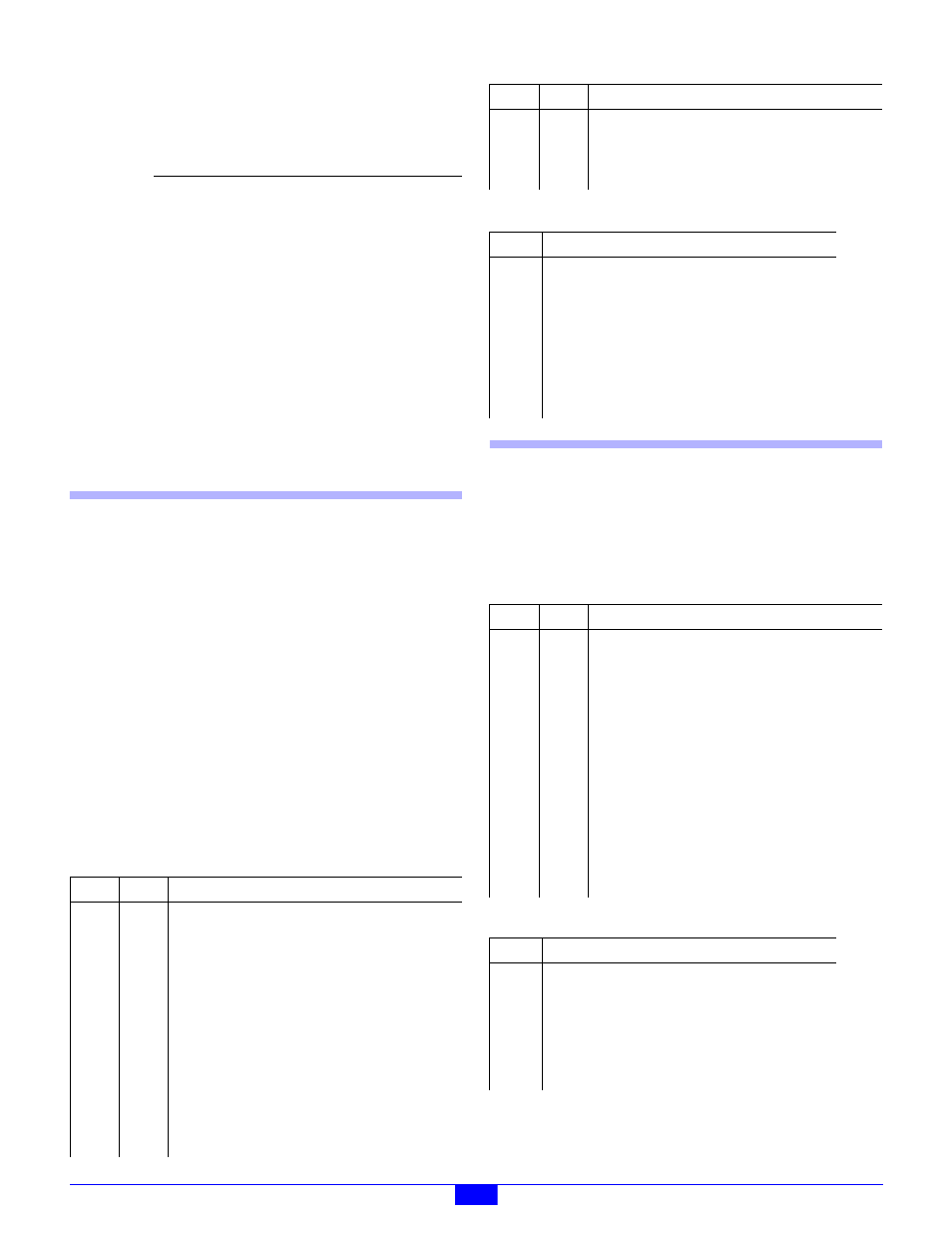5 applications, 1 incremental encoder interface, 2 pulse generator – Sensoray 2600 User Manual
Page 60

2600 Family Instruction Manual
55
Chapter 9 : Model 2620 Counter Module
Response
(Counts[0]),(Counts[1]),
(Counts[2]),(Counts[3]),
(Tstamp[0]),(Tstamp[1])
Notes
Counting is not interrupted by this action.
9.5 Applications
This section explains how to configure the counter channels for
various common applications.
9.5.1 Incremental Encoder Interface
This configures a counter channel so that it will interface to
either a quadrature-encoded or a single-phase clock source,
with optional index input.
Quadrature-encoded sources are typically used to track the
physical position of a mechanical process that can dither or
travel in two directions, while single-phase sources are for
mechanical processes that travel in only one direction (and
where dithering is either not possible or is not a problem).
The counter core can be forced to a reference value by
triggering a transfer from the Preload0 register. The index
input may be used as a hardware trigger by connecting it to an
external “home position” sensor (e.g., hall-effect sensor,
encoder index output, etc.). If enabled, an index transition will
preload the counter core. The core can always be preloaded by
invoking a SoftTrigger action with the LOD bit asserted.
Set the Mode register as follows:
Connect the channel as follows:
9.5.2 Pulse Generator
This configures a counter channel so that it will generate a
single output pulse in response to a hardware or software
trigger (i.e., a “one-shot”). The duration of the output pulse is
determined by the value stored in the Preload0 register.
Set the Mode register as follows:
Connect the channel as follows:
Parameter
Function
Counts
Byte array containing the 32-bit value
that is contained in the counter’s output
latch when the action executes. Bytes
are ordered least-significant byte first.
Tstamp
Byte array contains the 16-bit value
that is contained in the counter’s time
stamp latch when the action executes.
Bytes are ordered least-significant byte
first.
Field Value
Notes
OM
X
XP
*
Set as appropriate if using external index to trigger
preloads.
PL
*
Set to 1 to enable preloads upon external index, or
to 0 for soft preloads only.
LAT
0
Latch on soft trigger.
CET
0
OP
X
M
*
Single-phase clock: set to 4, 5 or 6. Quadrature
clock: set to 0 or 1 (x1 multiplier), 2 (x2
multiplier) or 3 (x4 multiplier).
CD
0
PLM
0
Use only the Preload0 register. Preload0 must be
programmed to the value that will be preloaded
upon preload trigger.
XC
0
External index signal.
Signal
Connect To
ClkA
Clock input for single-phase clocks. For
quadrature clocks, this is the phase-A input.
ClkB
Phase-B input for quadrature clocks. Tie to either
GND or +5V (same as open) to set count direction.
Index
Hardware trigger for preloads. Leave
disconnected if hardware-triggered preloads are
not required.
Output
NC
Field Value
Notes
OM
2
Output active only during pulse.
XP
*
Set as appropriate if using hardware trigger.
PL
*
Set to 1 to enable preloads upon external index, or
to 0 for soft preloads only.
LAT
0
Latch on soft trigger.
CET
0
OP
*
Set output polarity as required.
M
7
Use internal clock.
CD
2
PLM
0
Use only the Preload0 register. Preload0 must be
programmed to set the pulse duration.
XC
0
External index signal.
Signal
Connect To
ClkA
NC
ClkB
GND (count down)
Index
Hardware trigger for starting an output pulse.
Leave disconnected if hardware-triggering is not
required
Output
Pulse output signal.
Field Value
Notes
